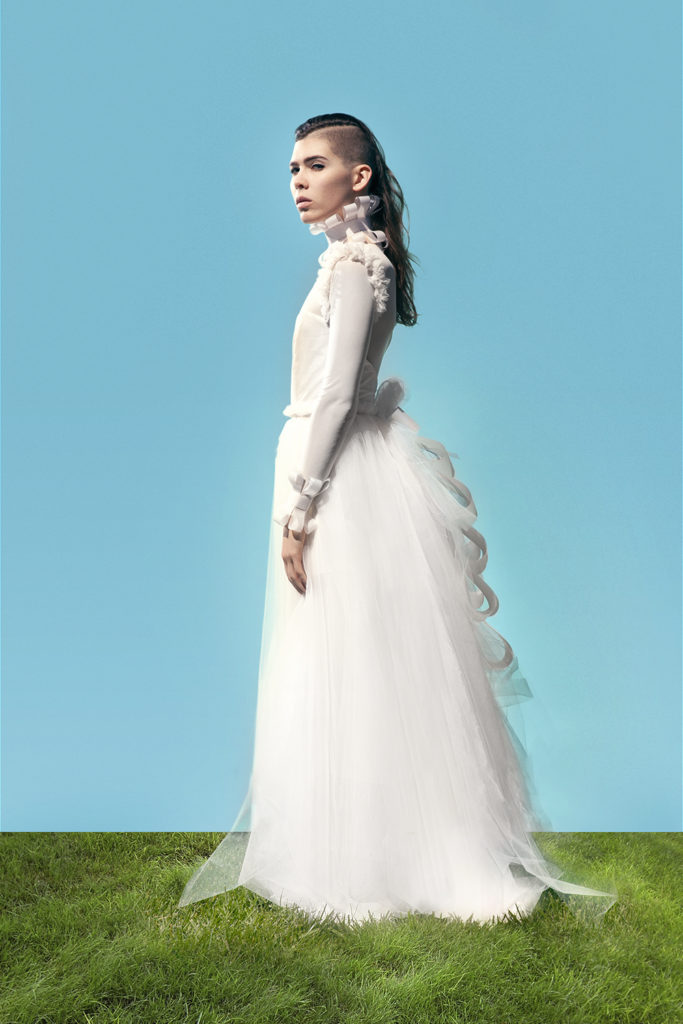



Over one hundred years ago, drag balls opened up across the United States and Europe. Ballgoers transformed royalty, affluence, and opulence into parody. Status became as much a contextual performance as a material reality. Ash Danielsen (they/them) captures the essence of how these fantasies exposed the contradictions of gender in DRESS. This project strings together the origins of gender within fashion to its future of rejecting norms. Danielsen’s project recognizes that trans people have always existed and troubled gender.
Eli Erlick (she/her), a queer trans woman, wears both traditionally masculine and feminine clothing based on Victorian fashion. The era notably launched a “prudish” revolution against overt displays of sexuality. Historian Harold Perkin even wrote the Victorians “became one of the most inhibited, polite, orderly, tender-minded, prudish and hypocritical” populations in history. However, gender and sexuality exploded at the same time. Underground research centers began to categorize and diagnose transgender people like Eli. The term transgender grew out of Victorian era research, despite being the period most noted for its supposed suppression of genders and sexualities. By wearing both traditionally masculine and feminine clothing, the photos disrupt the history of the era, which popular culture assumes had very few queer or trans people in it. In reality, trans people flourished and gathered together for one of the first times in history.
At the core of gender and sexual defiance is reclamation. By wearing both male and female clothing, Eli transforms the stereotypes of gender in Victorian society that continued into today. Trans women, at best, are still relegated to feminine clothing. These photos reject the ideal that trans people ever strictly conformed to gender roles by our own will. Demonstrated by performers in 19th century “Molly Houses,” gender never existed as a stable binary. These photos reveal the history left out from the early beginnings of trans identity. By bridging the transgender Victorian past with the present, these photos incite a rewarding discussion of the ephemeral nature of gender.
All clothing was designed by Rachel Riot in Oakland.